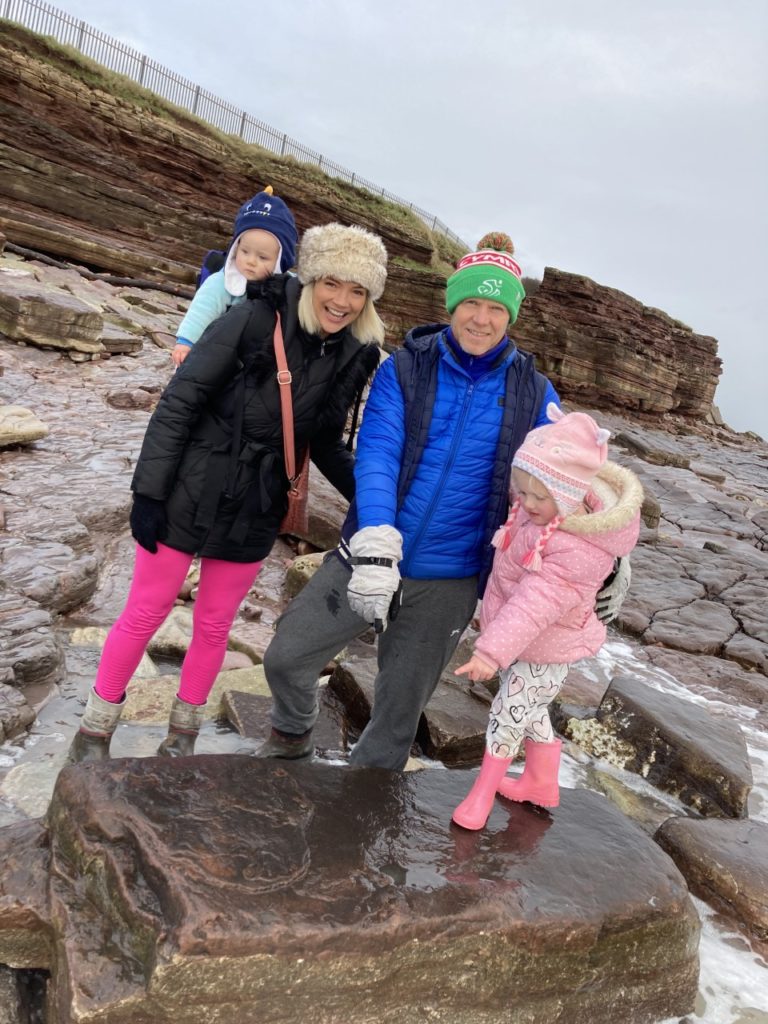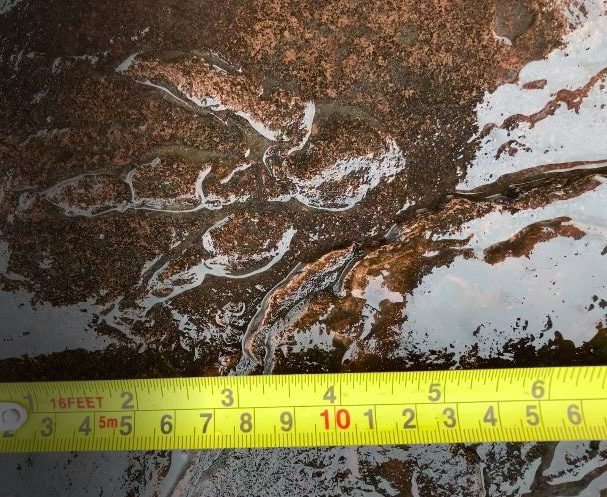The four year old and her family have found the most well-preserved dinosaur footprint near Barry which is more than 220 million years old.
Lily and her mum Sally Wilder were on a family walk at Bendricks Bay on the beach when the prints were noticed by Lilly Wilder a four year old girl who has a curious instinct for dinosaur prints and rocks. Her mother describes how she came across it “She pointed to a rock and turned to her dad and told him to look at the print in the stone.” But, her dad did not think much of it until they got home and realised how remarkably similar it looked to a dinosaur footprint.
The National Museum of Cymru and Archaeology Cymru jointly, were made aware of the find and confirmed it was indeed a footprint from a crocodile type dinosaur called a Grallator. This type of animal usually would leave a three toed print and we’re common in Europe millions of years ago. Palaeontologist Cindy Howells who works at The National museum says ” Although footprints like this are not uncommon, this is one of the best finds in Wales” and that she has never seen one so clear and well defined. She mentioned “This type of footprint is rare because of its age and how it was positioned on a shallow area of mud which made it not squelch out giving it a perfect shape.” It has been suggested a second print was found but was not as defined as this.

The archaeologist Karl James Langford who helped the family identify the print and has two decades of experience in similar prints claimed this footprint is the best one he’s ever seen and could be the rival others found elsewhere in the UK.
Experts have suggested that the footprint- which is the size of a child’s hand-possibly belonged to new species of a two legged dinosaur such as a Dracoraptor. It was likely the dinosaur would have been a carnivore and bipedal. The National Museum of Wales which houses many dinosaur fossils will be looking into this further.
Natural Resources Wales gave the National Museum of Wales special permission to extract the footprint and It will now be kept within the museum. The archeologist who identified the footprint stressed “the local girl who found this needs all the credit for this amazing discovery,” and with this, a plaque will be placed in the museum, honouring Lily and her exceptional discovery. Lily’s mother Sally Wilder, as a parent would be, is incredibly proud of her daughter and says ” Lily loves exploring nature and might be a palaeontologist or an archaeologist one day. I can’t wait to get out there and explore more of South Wales when we can, there’s so much history.”
When asking Lilly what she wants to be when she grows older her response has quite an unsurprising answer, “A Dinosaur.”
Visitors wanting to catch a glimpse of this rare discovery will have to wait until lockdown measures ease, when The National Museum of Wales will once again be open. But for one little girl in Barry this is something she’ll be able to remember for many years to come.

million old dinosaur print found in Britain in a decade
